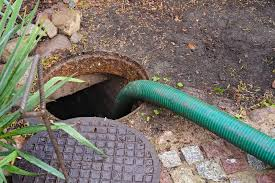KEY TO MANAGING YOUR CESSPOOL
While we frequently take our cesspools for granted, they are an important aspect of maintaining your home or place of business. To ensure that your cesspool does not overflow, cause delayed drainage or backup, you must maintain and pump your tank on a regular basis. The key procedures involved in managing the cesspool are described below.
MAINTENANCE OF THE TANK
Tank maintenance is necessary to keep your sewer system healthy and your cesspool from overflowing or malfunctioning. You can use a few essential tactics to keep your cesspool tank in good working order and avoid obstructions.
1. Repair any leaking faucets, toilets, or other fixtures as soon as possible because the excess water can cause delayed drainage, backup and potentially fill up your cesspool. If a leak isn't corrected, your cesspool may need to be pumped sooner than expected.
2. Don't put anything down the drain that your drain can't handle. This will cause obstructions as the solid waste will fill up the cesspool prematurely. Grease, oil, coffee grounds, baby wipes, and other solids are too much for your cesspool to manage. Also, even though it may seem like a good idea, it's better not to use a garbage disposal to avoid the sediments from clogging your drains and cesspool.
3. Make sure your cesspool is protected from rainwater, which can cause it to overflow. Make sure your gutters and drainpipes aren't glowing into the cesspool.
PUMPING YOUR CESSPOOL
Pumping your cesspool is the next step to maintain your cesspool efficiently. Pumping your cesspool is necessary to remove solid waste that has likely accumulated over time, regardless of how careful you have been. You can either pump your cesspool every three years or wait for a few signals that tell you that your cesspool is full.
Signs that the cesspool needs pumping
1. If you observe any water leaking onto your yard around your tank, it's likely that it's overfilled.
2. An unpleasant, persistent odor is another sign. All forms of water and waste, from toilet waste to sink water, are disposed of in your septic tank, and if your tank is overflowing with water, it will result in a foul odor. A foul odour indicates that your tank should be pumped.
3. Drains that are still slow after they've been unclogged could be the result of an overflowing cesspool or septic tank.
4. Your lawn may appear to be in excellent condition above your septic tank. This indicates that the area is flooded. The turf around your septic tank should be the same colour as the rest of your lawn.
5. Drains that are clogged are a solid sign that your septic tank is full and needs to be pumped.
If you see any of these symptoms, you should contact Affordable Cesspool Sewer & Drain right away for an evaluation and have your cesspool pumped before you end up with a serious mess. While you can wait for these indicators to pump your cesspool, it's recommended to employ our professionals for regular pumping every three years. Schedule an inspection today by calling 631-582-8282.






Comments
Post a Comment